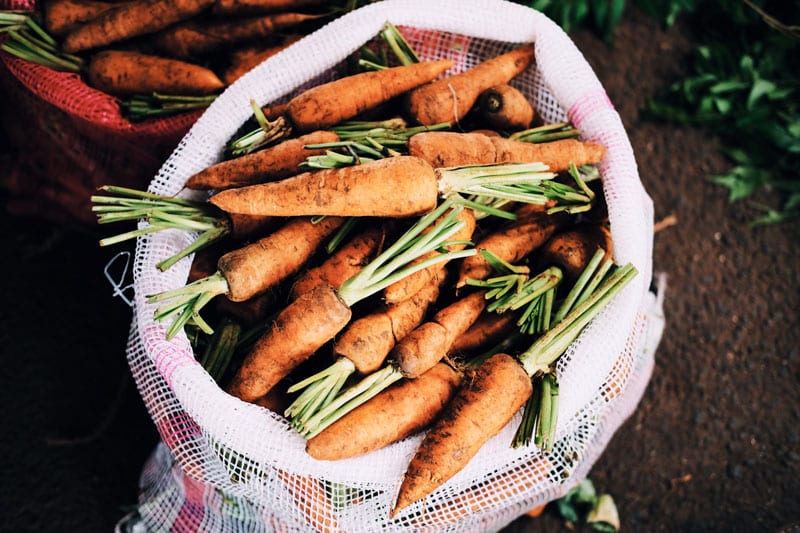Spring vegetables should be well on their way by now. Hopefully you’ve learned throughout the years that growing vegetables takes a little more than tossing seeds in the air and hoping they land in the dirt and start growing. We’ve guided you through all the basics and necessities of growing vegetables and soon you’ll be looking forward to harvesting your crops and being rewarded for your hard work. Today’s blog offers few tips harvesting tips to help when its time to harvest your spring vegetables.
Tips For Harvesting Spring Vegetables
- Lettuce, Swiss chard and spinach keep giving. You can snip away at the outer leaves as needed until the weather gets too hot and the plant starts to bolt (go to seed).
- Harvest the main head of broccoli by cutting it with a sharp knife and smaller sized heads will develop from side shoots.
- Tomatoes can be picked when they just start to blush so you can enjoy them before the wildlife does. Ripen them on the counter. Determinate tomates give you your fruit all at once while indeterminate keep giving.
- Harvest green beans before the pods begin to bulge, and peas after they bulge.
- Potatoes can be dug up when the plant’s leaves turn brown and die. Use a garden fork to loosen the soil and sift potatoes out. Pull up bulb onions when their tops fall over and lay on the soil.
- Squash and zucchini are best when harvested young and tender. Use a knife or pruners and cut the stem 1″ above the fruit.
- Cucumbers are also sweetest at a younger stage, snip at stem 1/4″ above the fruit with pruners or use a sharp knife.
- Harvest carrots by soaking the soil first, then loosen soil with a garden fork and twist the tops while pulling up.
- Radishes and turnips can be pulled when they are 1″ in diameter, beets at 2″ – 3″ in diameter.
- Eggplant should be at its full color, and still bright and shiny. Snip at stem above the cap, or cut off with a sharp knife.
- Harvest watermelon when the green tendrils start to turn brown, the surface color becomes dull, the top has little contrast between stripes, and the bottom has a creamy or yellow-color. Cut off the vine with a sharp knife close to the fruit.
- Harvest a cantaloupe when the color between netting (outside texture) changes from green to a tan or yellow-gray, and when it has sweet, pleasant smell. It should separate from the vine fairly easily with a gentle pull if it is ripe, but you can use a knife so as not to break or damage the vine.
On a side note, if you’re wondering why your vegetables aren’t producing the way you thought they would, and you’ve given them great soil & compost to grow in, water, and fertilizer, look to the skies for your answer. If it’s been cloudy, or unseasonably cold for an extended period of time, this could be the reason your veggies are slow to show. For your vegetables to really take off, that sun needs to be shining consistently. So hang in there, and do some sun salutations every once in awhile. It’s also helpful to know which vegetables are slow to grow and which are fast, so you have a clue as to when to expect a harvest.

Don’t panic if your vegetables come later than expected….we had a late freeze, so things slow down a little until it warms consistantly.
Be sure to share your pictures with us on our Facebook page where you can also get vegetable gardening tips and inspiration. Mark your calendars for all of our fantastic seminars coming up so you can keep learning and having success. We are here to help you get the most out of your vegetable gardening experience which we truly hope becomes, or has already become, an essential part of your life. Now go grow something!
~The Happy Gardener


Trackbacks/Pingbacks